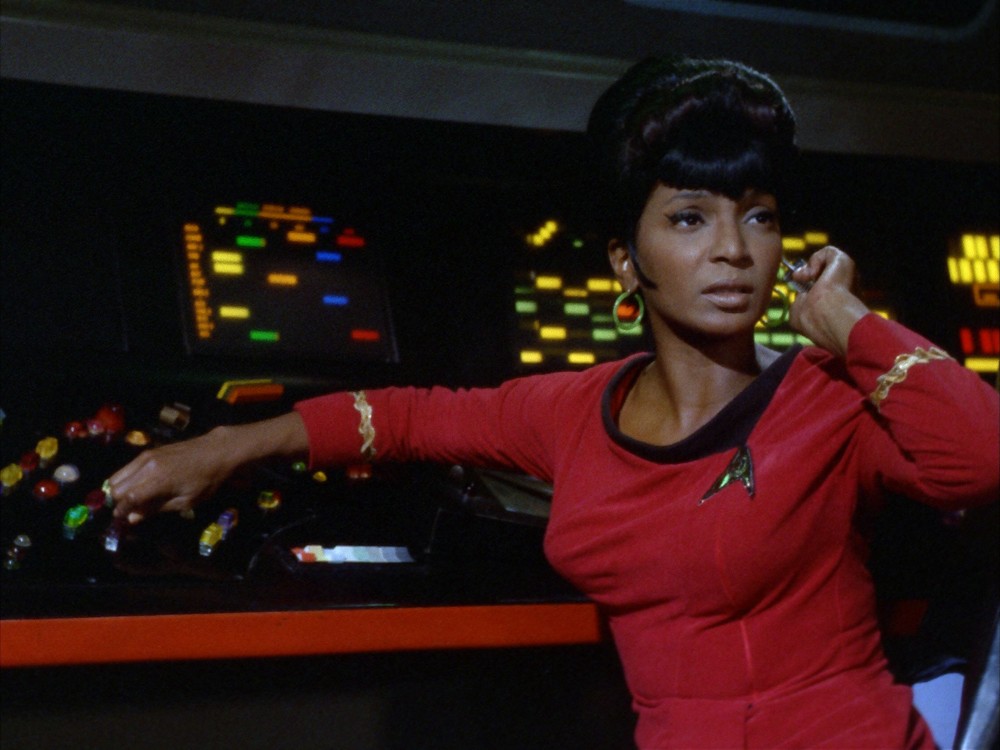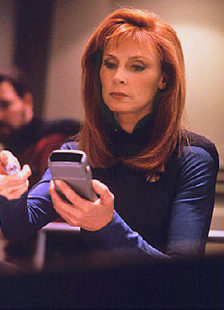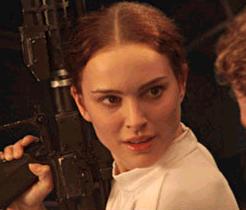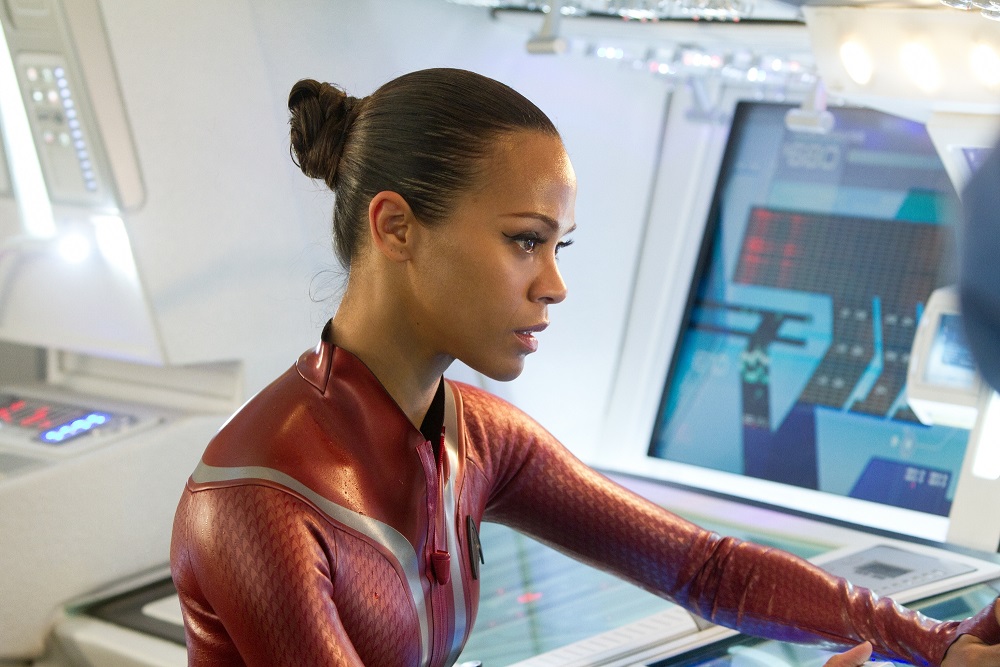I’m about to start a fight, I already know that. I’m prepared, but please be respectful if you make any comments. I’ll be reviewing each one as I see them.
I’m also going to give a bit of a disclaimer: I don’t believe that Star Wars and Star Trek should be compared at all. One is based in television, thus the characters have more time to be developed and the movies are based on character development that already exists. The other is a 6-part (and more coming) movie-series with a short amount of time for character development. Star Wars is a set storyline based mostly on Joseph Campbell’s research on comparative mythology, Star Trek is a space opera (and a very good one at that) with a continuous storyline, mainly based on Gene Roddenberry’s own imagination. Originally, this post was meant to compare the female characters and weigh out which one is stronger in terms of feminism, but as I did more and more research, I realized that with J.J. Abrams’ recently obtaining creative control over both, my own worries took over.
Now, when it comes to comparisons, I would like to point out that Star Trek has done a much better job at portraying strong female characters over Star Wars. If you’re coming here only having seen the more recent 2009 and 2013 films, then you’re in for a shock and you will definitely understand why I’m so worried.
 Okay, as with the Disney Princesses, we also have to understand that the original Star Trek series (or TOS) came out in the 1960s, when women were just starting to gain independence. TOS portrayed one of the, if not the, first African American women in a role that did not make her a maid or a nanny. In fact, she was a Communications officer. The progression that TOS showed in portraying her was a big deal. Yes, she wore a short dress and, no, women were not allowed to be Starship Captains (yet), but the fact that an African American woman was one of the lead characters, was not a nanny or a maid, and she embodied strong will and intelligence, gave women (and more importantly, African American women) in the 60s something to hope for in the future.
Okay, as with the Disney Princesses, we also have to understand that the original Star Trek series (or TOS) came out in the 1960s, when women were just starting to gain independence. TOS portrayed one of the, if not the, first African American women in a role that did not make her a maid or a nanny. In fact, she was a Communications officer. The progression that TOS showed in portraying her was a big deal. Yes, she wore a short dress and, no, women were not allowed to be Starship Captains (yet), but the fact that an African American woman was one of the lead characters, was not a nanny or a maid, and she embodied strong will and intelligence, gave women (and more importantly, African American women) in the 60s something to hope for in the future.

Twenty-Five Years later, when Gene Roddenberry decided to finally concede to a New Generation (Next Generation, get it? Eh? Okay, I’ll stop.), he made sure that there was not just one, but three main female characters on the Enterprise in strong roles. In the first season, there was Tasha Yar, the Chief Security Officer of the Enterprise, Deanna Troi, Ship Counselor and later promoted from Lieutenant-Commander to Commander, and Beverly Crusher, Chief Medical Officer. Now, yes, Tasha Yar only lasted a season (admittedly the actress’ own doing), but throughout the series we typically saw at least two, if not three, strong female main characters.

Deanna Troi, as ship’s counselor and half-Betazoid, was frequently able to resolve issues and maintain peace when no other characters could. Beverly

Crusher’s instincts, intelligence, and commanding nature frequently had Captain Picard under her command, despite his own position as Ship’s Captain.
Also in the Star Trek Universe is Voyager, the series that brought us Captain Kathryn Janeway, the Captain of the USS Voyager and later Vice Admiral of Starfleet. She was a strong leader and a scientist and, like myself, enjoyed a good cup of coffee. But all joking aside, she presented the idea to many women that we, too, can get to positions of leadership through our own strength of mind.

Okay, okay, the Star Trek praise is being set aside now, okay? This isn’t to say I don’t see the issues with some of the characters or their flaws. What makes a good character is the flaws. But I also know that Troi was used a lot as a damsel in distress and Crusher’s job that was portrayed more often was as mother and nurturer to Ensign Wesley Crusher. But because it was a television series first and foremost, these aspects could also be balanced with more characterization. We understood that Crusher was a single mother and that, in the beginning, Troi was raised to be a girly girl by her very demanding mother.

In Star Wars, we meet two potentially strong female characters, Princess Leia and Queen Padme Amidala. In Episodes IV-VI, Princess Leia is the main female protagonist, and mainly the only female around. (Spoiler Alert) No wonder her brother kisses her. Other than Leia, we mainly see slave girls, dancers, and small glimpses of Mon Mothma and Aunt Beru. She’s strong and opinionated, yes. She rescues herself and makes sure that Han Solo knows who’s in charge. She’s not just a Princess, but a diplomat, and is one of the few characters who will stand up to both Darth Vader and Governor Tarkin. Leia don’t take no shit. But, again, she’s alone. And, unlike Janeway, she obtained her position through birthright, not through her own intelligence and willfullness. Granted, as with Star Trek, these movies started in the 70s and deserve to be given credit for what did happen. And the simple fact that women got to see a strong female leader beside two equally capable males was captivating and certainly inspired many women at the time.

Similarly, Padme is interesting. She’s strong. She’s a 14-year-old Queen who saves Naboo all on her own. She’s is a strong leader and well-spoken. She’s portrayed as a fighter, only trying to do what is right for her people. In fact, she and her daughter hold many similar traits, though Padme may not be quite as outspoken as her daughter. Unfortunately for Padme, as soon as she meets Anakin Skywalker, her entire characterization becomes about him. In fact, most, if not all, of the significant women in Episodes I-III are defined by their ties to Anakin. And poor Padme dies of a broken heart after giving birth – as if it’s not enough that her life must be about him, but her death has to as well.
I’m hoping to get into some of the Expanded Universe of Star Wars, preferably the animated series known as The Clone Wars, but even there I fear what I may find.
If you’ve stuck around to this point, CONGRATULATIONS. I applaud your reading skills. Now, on to why I’m worried.
Star Trek (2009) and Star Trek: Into Darkness have already portrayed a world that didn’t particularly fall in line with Roddenberry’s vision of an equal future. Uhura is still a strong, capable woman in the series, however, there’s an undertone that places most of her characterization on her relationship with the two main male characters aboard the Enterprise, Spock and Kirk, even moreso in the second film than in the first film.

Star Trek (2009)
The good: Uhura demonstrates her abilities when she 1. rushes with Kirk to explain to Spock that she did hear a transmission from Klingons about a Romulan ship, thereby forcing Spock to promote her to Communications Officer and 2. When she forces Spock to allow her aboard the Enterprise when she would have gained the position had she and Spock not been in a romantic relationship.
The bad: Uhura is objectified and made into a bit of a damsel. We first meet her at the bar where Kirk hits on her. Here, while she is telling him no, a bunch of other Starfleet Officers come to her “rescue” wherein there’s a bar fight and Uhura stands on the sidelines screaming for them to stop. A little later, for seemingly no reason at all, J.J.Abrams decides to undress Uhura onscreen, presumably for the male audience’s benefit (as well as Kirk’s). While I appreciate that Uhura doesn’t scream and immediately cover herself up, it’s pretty annoying knowing she’s half-naked if only for being half-naked.
After that, most of her characterization is based around nurturing Spock in his time of need.
Star Trek: Into Darkness (SPOILERS AHEAD)
Unfortunately, the second film doesn’t get much better.
The good: Uhura demands that she be able to perform her role as Communications Officer and single-handedly goes out to communicate with the Klingons (more on that in The Bad), she is able to Stun Khan with the element of surprise and her Phaser, allowing Spock to grab a sample of his blood and save Kirk.
The Bad: While attempting to be the Communications Officer, Uhura becomes a damsel in distress (again, I might add) – she is choked by one of the Klingons, which prompts Spock and Kirk to come to her rescue. She spends most of the movie trying to get Spock to talk about his feelings, which wouldn’t be bad except for the fact that she does so in professional settings, ignoring any respect she has for her job and arguing about her relationship in front of their captain on their way to an away mission.

Couple this with the unneeded nudity of Carol Marcus, who is literally seen half-naked to serve fan boys. Seriously: “Last time, Zoe needed to wear underwear, and this time it was Alice Eve’s turn,” the costume designer explained to the Guardian. “You know, it’s a rather large male fanbase, and JJ wanted to appeal to that.” I will explain that the existence for Carol Marcus is because Carol was a vital character in Star Trek II: The Wrath of Khan, and Kirk’s Baby Mama. Since this movie spends much of it’s time as an homage to Star Trek II, I understand her existence. She is a weapons expert and a scientist, however, her mysterious character only exists as a mystery because she’s hiding from Daddy. Also, she can open the torpedos. Big whoop. Bones learns how to do it on his own, later and succeeds without her. Her existence was merely a fan-service, unfortunately.
 In Wrath of Khan, Carol is much more badass and interesting. She’s the reason why the film exists in the first place, as she is the creator of The Genesis Device. Her work as a Scientist could bring about whole new worlds or, at the very least, could repair broken planets. Unfortunately, Abrams reduced her to eye-candy.
In Wrath of Khan, Carol is much more badass and interesting. She’s the reason why the film exists in the first place, as she is the creator of The Genesis Device. Her work as a Scientist could bring about whole new worlds or, at the very least, could repair broken planets. Unfortunately, Abrams reduced her to eye-candy.
This worries me. J.J., look, we need to talk.
This is 2013. Women are more than eye candy. Their characterization is about more than just the men around them. Uhura is more than just Spock and Kirk, and Marcus was about more than just sex and her father. The women in the Star Wars Universe can be about more than just the men around them. In fact, do us a solid and make the main protagonist a woman. Star Trek and Star Wars need you to understand this. We need more strong female characters, who don’t need the men in their lives to rescue them and who do more than nag their boyfriends about their feelings. (Uhura, he’s a Vulcan, okay? There will be times he denies his feelings. Get. Over. It.) Please stop reducing their characterizations to moments of objectification. You have the power to expand feminism in Geekdom. You have the power. Use it well.
So, these Star Trek and Star Wars things, they’re kind of a big deal? 😛
I’m sorry, I couldn’t help it. I haven’t watched any of the Stars in my life, and I only know of the “Imma yo fatha!” scene from the third movie. And the fact that I call it the third movie and not Episode VI might say something about my interest in them XD
But I DO agree with you with the problem of female characters. And I’m glad that you aren’t criticizing their original representation like it should fit with today’s standards. I still think Marston’s Wonder Woman is pretty good considering he wrote it in 1940, and the Silver Age of comics were goofy and offensive as a whole, not just Wondy. So I’m glad people give old shows a break and praise the new interpretations for their better changes and criticize them for their worse.
What I don’t like about a lot of sci-fi and fantasy is that they have so much freedom, yet not many use it. Sci-fi is about the future with other planets, people, culture and technology. Good, then some of those aliens have different cultures and biology, like the women are stronger than the men! Have an alien race inspired by the sea-horses where the males get pregnant and both have a penis (I think that was it?). For the love of god, if you want perv-service (I refuse yo call it fan-service because a fan shouldn’t care about porn unless it involves a porn movie), have an alien race that don’t have restrictions of nudity, and that for them too much coverage is offensive (means that they are hiding something disgusting whether from their bodies, past or mind or whatever), so even if they must cover naughty parts to respect the other crews, they are allowed more show. As long as they are not oversexualized in their movements as heck, that could work, because it is sci-freaking-fi!
And FANTASY! You’re making a world with mythological creatures and powers, with other species and history and culture and what have you. Why are fantasy authors so often restricting themselves to OUR (European) middle age cultures? How about having magic work stronger on females, and so the sexes are equal valuable in battle? Maybe for conflict, have it be law that women can only be trained in magic and not swordsmanship, and men can only use sword and not magic. Heck, our religions aren’t here to stop us, why not make a religion that favors the mind rather than the muscle, and condemns/damns destructive strength?
–
I’m currently having fun making a religion in my fantasy world that explains somewhat why women are considered superior to men in that world. Again, strength is deemed destructive because of, out of the three deities, the two goddesses create life and the one god uses his force to destroy life, and so one goddess must nurture the other back to health (it is supposed to symbolize the seasons; spring, summer, fall and winter. The goddesses are Earth and Water, while the god is Fire). So in the current age of the protagonist, men are considered dumb muscles who need a woman by his side to control him and make sure he doesn’t stray. Children are the woman’s property, and the man is only the ingredient in their sexual relationship rather than the maker as in our world. Men who are arrested for murder can never escape the death sentence because only a woman, who can give life, can take it (that doesn’t mean women can’t get the sentence; they just don’t automatically get it), but on the other hand, men’s criminal behavior can be excused because of his lack of a female in his current life, of course he then couldn’t control himself! Homosexuality between men is actually acceptable, because it is believed that means the men are actually women in a man’s body (so even though they are still less than women, gay men are more respected than straight men), and homosexuality between women is partly okay, since that COULD mean that the woman is actually a man in a woman’s body, but in religion, the two goddesses worked together to create life, and art often depicts them naked together, so a relationship between two women might be purer than between a woman and a man (like in Greek times between two men instead of a man and a woman).
–
There. It’s no Tolkien or George R. R. Martin, but it is a world unlike our own, and a culture and history that spins how we take the world upside-down. I love Martin’s characters and Tolkien’s world and languages, but they really don’t challenge their respective social standards that much.
I completely agree – we can have a completely equal and different world. I think Star Trek (the television series and the following spin offs) did a good job at doing so.
An interesting note on Leia that I recently briefly touched upon on a blog post: in ANH, she had her own theme music. It was actually called “Princess Leia’s Theme.” Unfortunately, in ESB, her theme melds with Han’s to become “Han Solo and the Princess” (doesn’t even include her name!) and then in ROTJ it’s “Luke and Leia”. I’m disappointed that after ANH, her theme is never heard of again, just blended with the two main men. Angers me all the time.
It’s completely frustrating. I hope that the new movies give some much needed justice to their female characters!
Came across this article by chance. Good to see these aspects rightfully addressed here. Been a “Trekkie” since childhood (a Star Wars- fan, also– say, why’s there no short fan name..?) but, yeah, these things ARE tainted (especially the newer installments !). Sure, since ST:TOS it changed to “Where No ONE has gone before”, as opposed to the “…No MAN…”. Still, even the honorable Cpt Janeway has been bad-mouthed by some, which saddened AND angered me (well, it IS “Cave MAN”, not “Cave PEOPLE”, isn’t it…?).
And the female Ghostbusters !– damn, it’s NOT entirely the WOMEN’s fault ! (Yeah, I’ve heard Melissa McCarthy being compared to Adam Sandler 😯, etc) But it worked out in the comic books, the animated show – some better writing & humor (“Sandler” …) and presto. I’m really mystified why it wouldn’t fly in live action.
In closing, I’d like to apologise for the many bad examples of,umm…”my” gender. Do keep up the good work ! We should all unite in geekdom, but sadly there’s gendering (& underestimated women anyway) in ALL stuff, fiction included.
(Please forgive me if my punctuation is off at times, I’m bilingual – German/ English 😌)